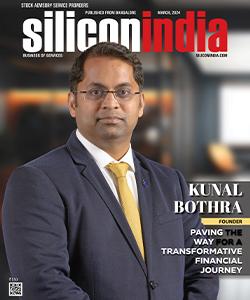'Highly Taxed' Auto Industry Seeks Relief in Budget
NEW DELHI: Stating that the automotive industry in India is "highly taxed" with levies accounting for up to 77 percent on cost, SIAM has asked the government to merge multiple taxes into a single excise duty.
The automotive industry body, in its pre-Budget presentation to the Finance Ministry, also said that Road Tax must be subsumed in GST in order to prevent state governments "tweaking it to raise further revenue as is being done today".
Besides, the Society of Indian Automobile Manufacturers (SIAM) said the 1 percent NCCD (National Calamity Contingent Duty) on vehicles should be withdrawn saying "including motor vehic les, which provide mobility, in the discouraged category with tobacco is not fair and equitable".
Stressing on the need to give the sector a relief from tax burden, SIAM said: "Automotive industry in India is a highly taxed sector, taxation accounts for up to 77 percent on cost (it has) one of the highest taxed manufactured products in India."
On the issue of multiple taxation, SIAM said currently levies applicable on vehicles included basic excise duty 12.5 percent, 24 percent, 27 percent and 30 percent; automobile cess of 0.125 percent and NCCD of 1 percent.
These multiple levies should be merged into a single head under excise duty, it said.
The industry body is also of the view that there must only be two rates for excise duties on motor vehicles.
"Small cars/vehicles, two-wheeler, three wheeler, goods vehicle, chassis for motor vehicles, passenger vehicle designed for carrying 10 or more persons should attract lower duty (of) 12.5 percent as is the present rate," SIAM said, adding all other passenger vehicles be levied excise duty of 20 percent.
Looking forward to introduction of GST, SIAM said: "All kinds of domestic indirect taxes, including Road Tax, R&D Cess and Octroi should be subsumed in the proposed GST, as suggested by the Kelkar Committee."
For the vehicle industry the most important is 'Road Tax', which could undermine the entire benefit of GST unless it is subsumed in the overall GST rate, it said.
"Unless Road Tax is subsumed in GST, state governments will continue tweaking with the Road Tax rates to raise further revenue as is being done today. Today there are states which are charging Road Tax as high as 14 percent, 18 percent, 20 percent, etc," SIAM said in its pre-Budget presentation.
The industry body also sought a clarity in the provisions of GST on second-hand vehicles saying "there is a huge opportunity for the government to earn revenue as a judicious tax structure under the GST can help organised trade of the second-hand vehicle business".
SIAM further said that after introduction of GST, no
additional tax should be introduced or levied.
"A provision should be made in the law that no new levy or tax can be introduced," it said.
Resenting the NCCD imposed on the auto sector, SIAM said: "In 2001-02, NCCD was imposed on tobacco products on health ground. In 2003-04, (it was) extended to motor vehicles for one year and later extended without time limit.1 percent NCCD on vehicles should be withdrawn."
Seeking a support for promoting hybrid and electric vehicles, SIAM said excise and custom duty concession on select hybrid/electric vehicles parts should be available for a longer period instead of till March 2016.
"Budget allocation needs to be made for supporting development of hybrid and electric vehicles," it added.
The industry body also sought Centre's intervention to solve problems related to state government incentives regarding excise duty on sales tax/VAT.
"The amount of sales tax collected and retained by the manufacturer, as allowed under an incentive scheme launched by the state government, be considered as equivalent to sales tax actually paid under the excise law and thus should not be added to the assessable value of goods for excise duty calculation. This should be made effective from the date of amendment," it said.
Highlighting the need for fleet modernisation, SIAM suggested "a limited-time incentive scheme for retirement of old vehicles and replacing them with modern, safe and fuel efficient vehicles".
"Old vehicles of age 10-15 years could be retired through a single window fleet modernisation programme," it said, adding replacement incentives ranging from  4,400 for two wheelers to Rs 90,000 for commercial vehicles may be considered.
4,400 for two wheelers to Rs 90,000 for commercial vehicles may be considered.
SIAM said the total incentive required for scrapping 15-year-old vehicles, including two-wheelers, three-wheelers, passenger vehicles and commercial vehicles, could be around  56,665 crore and each new vehicle purchased against a scrapped vehicle will generate more tax revenue.
56,665 crore and each new vehicle purchased against a scrapped vehicle will generate more tax revenue.
Read More: Investment Ideas to Look Out For In 2016
Failure to Pass GST May Affect Government's Ability to Ramp up Spending: World Bank

